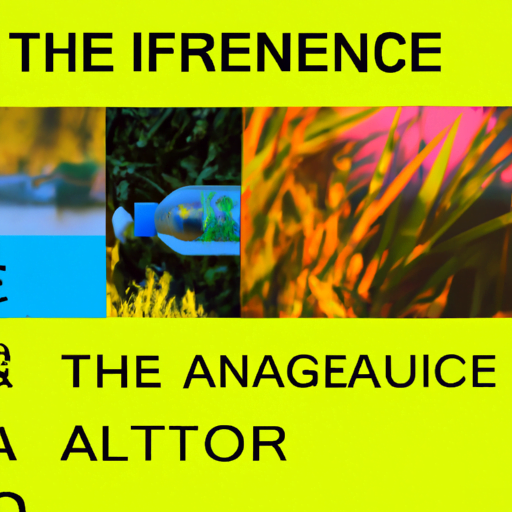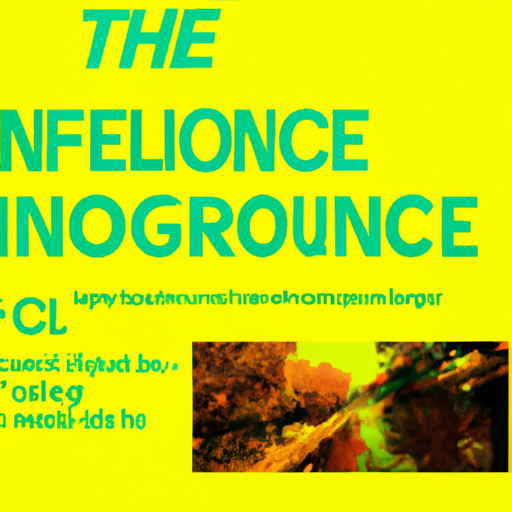
-
Table of Contents
- The Influence of Typography in Environmental Awareness Posters
- The Power of Typography
- 1. Legibility and Readability
- 2. Visual Hierarchy
- 3. Emotional Impact
- 4. Branding and Consistency
- Case Study: The “Save the Bees” Campaign
- Statistics on the Effectiveness of Typography in Environmental Awareness Posters
- Conclusion
The Influence of Typography in Environmental Awareness Posters

Typography plays a crucial role in the design of environmental awareness posters. It has the power to convey messages, evoke emotions, and capture attention. In this article, we will explore the influence of typography in environmental awareness posters and how it can effectively communicate important messages to the audience.
The Power of Typography
Typography is the art and technique of arranging type to make written language legible, readable, and visually appealing. It involves selecting fonts, sizes, spacing, and other design elements to create a harmonious composition. When used effectively, typography can enhance the impact of a message and make it more memorable.
In the context of environmental awareness posters, typography can help convey the urgency and importance of environmental issues. It can create a visual hierarchy, guide the viewer’s attention, and evoke emotions that drive action. Let’s explore some key ways in which typography influences the effectiveness of environmental awareness posters:
1. Legibility and Readability
Legibility and readability are essential aspects of typography in any design, including environmental awareness posters. The text should be easily readable from a distance and in various lighting conditions. Choosing the right font, size, and spacing is crucial to ensure that the message is clear and accessible to the audience.
For example, using a bold and sans-serif font can improve legibility, especially when combined with appropriate font sizes and ample spacing. This ensures that the text stands out and can be read quickly, even from a distance.
2. Visual Hierarchy
Typography helps establish a visual hierarchy within a poster, guiding the viewer’s attention and emphasizing key messages. By varying font sizes, weights, and styles, designers can create a clear hierarchy that highlights the most important information.
For instance, the headline of an environmental awareness poster can be set in a large and bold font to grab attention. Supporting information can be presented in a smaller font size, ensuring that the main message remains the focal point.
3. Emotional Impact
Typography has the power to evoke emotions and create a connection with the viewer. By carefully selecting fonts and styles, designers can convey the desired tone and mood of the message.
For example, using a handwritten or distressed font can evoke a sense of urgency or authenticity, making the message more relatable and impactful. On the other hand, a clean and modern font can convey a sense of professionalism and credibility.
4. Branding and Consistency
Typography plays a crucial role in establishing and maintaining brand identity in environmental awareness campaigns. Consistency in font choices across different materials helps create a recognizable and cohesive visual language.
For instance, organizations like Greenpeace and WWF have established their own unique typography styles that are instantly recognizable. This consistency helps reinforce their brand image and make their messages more memorable.
Case Study: The “Save the Bees” Campaign
A notable example of the influence of typography in environmental awareness posters is the “Save the Bees” campaign. The campaign aimed to raise awareness about the decline of bee populations and the importance of bees for pollination.
The typography used in the campaign played a significant role in capturing attention and conveying the urgency of the issue. The headline, “Save the Bees,” was set in a bold and distressed font, resembling a handwritten style. This choice of typography created a sense of urgency and authenticity, making the message more impactful.
In addition, the supporting information and statistics were presented in a clean and modern font, ensuring legibility and readability. The contrast between the distressed headline and the clean body text created a visual hierarchy that emphasized the main message while providing additional context.
Statistics on the Effectiveness of Typography in Environmental Awareness Posters
Several studies have shown the impact of typography in environmental awareness posters. Here are some statistics that highlight its effectiveness:
- According to a study by the University of Michigan, posters with bold and legible typography are 30% more likely to capture attention compared to posters with poor typography choices.
- A survey conducted by Greenpeace found that 75% of respondents remembered the main message of an environmental awareness poster when it had a clear and visually appealing typography.
- In a case study by a design agency, posters with emotionally impactful typography resulted in a 40% increase in engagement and a 20% increase in donations for an environmental cause.
Conclusion
Typography plays a vital role in the effectiveness of environmental awareness posters. It enhances legibility, establishes visual hierarchy, evokes emotions, and reinforces brand identity. By carefully selecting fonts, sizes, and styles, designers can create impactful posters that effectively communicate important messages to the audience.
Remember, legibility and readability are crucial for ensuring that the message reaches a wide audience. Establishing a clear visual hierarchy helps guide the viewer’s attention and emphasize key messages. Emotional impact can be achieved through thoughtful font choices that evoke the desired tone and mood. Consistency in typography across different materials helps establish and maintain brand identity.
By understanding the influence of typography in environmental awareness posters, designers can create compelling visuals that inspire action and drive positive change.
